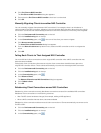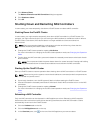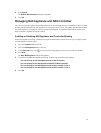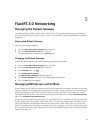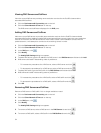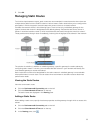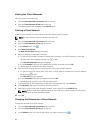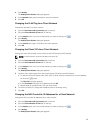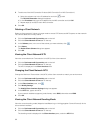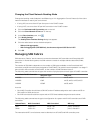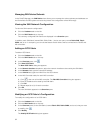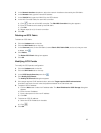
3. In the Routing pane, select the static route that you want modify and click .
4. Click Delete static route.
The Delete Static Route dialog box appears.
5. Click OK.
Managing the Internal Network
The internal network defines the private subnet dedicated to the FluidFS cluster for internal
communication. This range is not routed or accessible by other machines on the network.
Viewing the Internal Network IP Address
View the current internal network IP address. While it is not displayed in FluidFS Manager, the netmask is a
Class C netmask (255.255.255.0).
1. Click the System tab on the left.
2. Click the Internal tab on the top.
The internal network IP address is displayed in the Internal Settings pane.
Changing the Internal Network IP Address
You can change the internal network IP address. However, the netmask cannot be changed from a Class
C netmask (255.255.255.0). The internal subnet must not conflict with other subnets on the network. If
sharing internal switches with other FluidFS clusters, make sure that the internal subnet does not conflict
with the internal subnet used for the other FluidFS clusters.
1. Click the System tab on the left.
2. Click the Internal tab on the top.
3. In the Internal Settings pane, click .
4. Click Modify Internal Network.
The Modify Internal Network dialog box appears.
5. In the Internal network IP address field, type a network IP address.
For example, 10.255.69.0
6. In the Internal network mask field, type a network mask IP address.
For example, 255.255.255.0
7. Click OK.
Managing the Client Networks
The client networks define the client VIP(s) through which clients access CIFS shares and NFS exports. If
client access to the FluidFS cluster is not through a router (in other words, this is a flat network), Dell
recommends defining one client VIP. If clients access the FluidFS cluster through a router, define a client
VIP for each client interface port per NAS controller.
57



